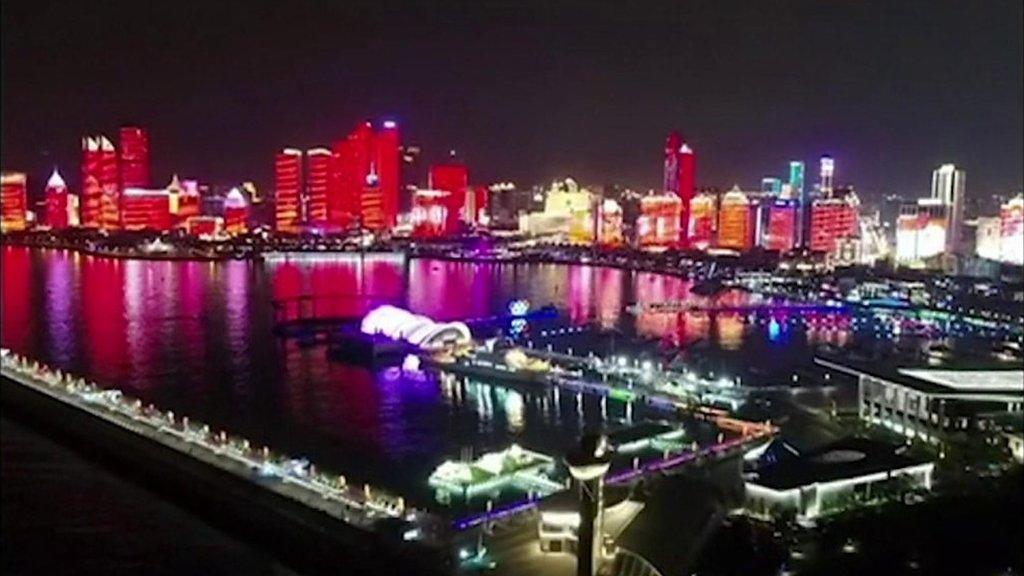People's Republic of China - its 70-year history
- Published
China lights up for 70th birthday
The People's Republic of China turns 70 years old this year.
Now, you might be thinking, "Hang on, China is WAY older than that!" and you would be correct.
For centuries, China has been one of the most advanced civilisations on Earth.
Paper money, the toothbrush and of course, china (what you might drink tea from), were all invented thousands of years ago by the Chinese.
But today's China is a very different place.
A huge moment in China's history happened 70 years ago - and that's what is being marked by the country this week.
The birth of the People's Republic of China
In 1949, a long-standing civil war between two political parties in China resulted in the country being split into two states. They became known as;
The People's Republic of China, led by the Communist Party -they took control of the mainland;
and the Republic of China, led by the Kuomintang party - now known as the island of Taiwan.
The Communist Party, led by a man named Mao Zedong, defeated the Kuomintang party who then retreated to the island of Taiwan off the coast of mainland China.
Communism is an idea created by a man called Karl Marx.
But the ideas behind communism divide people around the world to this day.
For some, communism is an idea which can lead to a fairer society.
But millions of people have been killed or imprisoned under communist rulers.
It often also failed to bring about the changes promised to countries that have tried it.
"Mao era" China
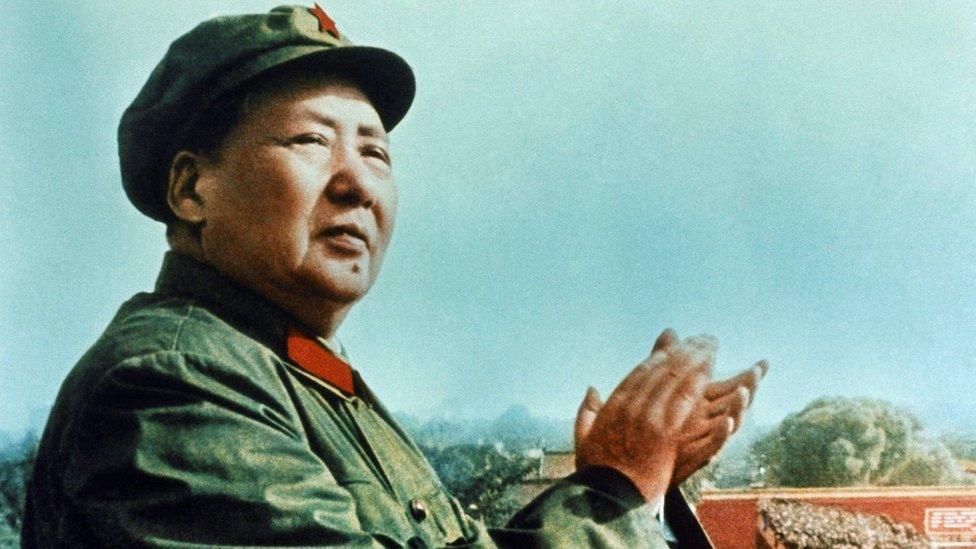
Mao Zedong - also known as Chairman Mao - was a Chinese communist leader and founding father of the People's Republic of China
Chairman Mao went on to lead the country for nearly 30 years. During his leadership, he set out to reshape Chinese society.
But a series of failed schemes left the country in a bad way.
His policy known as the 'Great Leap Forward' was meant to improve farming and industrial production, but poor harvests led to famine (starvation) and the deaths of millions of people. The policy was scrapped soon afterwards.
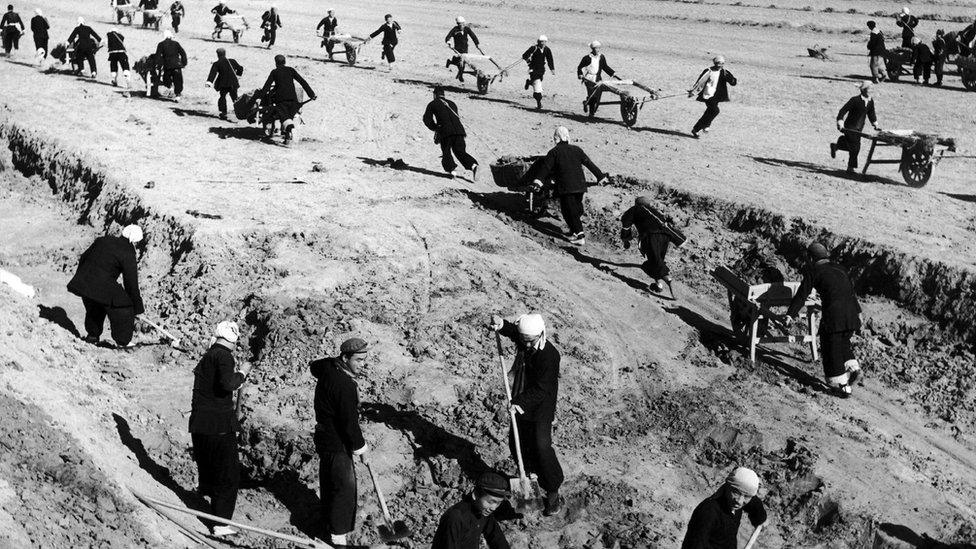
Poor farming methods introduced by Chairman Mao led to food shortages and starvation.
After his disastrous few years in power, Chairman Mao came under a lot of pressure from other leaders and was forced to govern from the sidelines, making the odd ceremonial appearance but having little input in day-to-day policies.
This upset him very much and in order to regain some control, he appointed his wife, Jiang Qing (an actress), as the Minister of Culture.
One of her first tasks was to get rid of any art or books across the country that didn't promote Communism.
What followed was what was called the Cultural Revolution - a period where Chinese citizens had to follow a strict set of Communist rules, read certain newspapers, and carry around a little red book full of Chairman Mao's sayings and speeches.

Chinese citizens were made to carry around a little red book full of Chairman Mao's sayings and speeches.
Street names that didn't celebrate Communism were changed and historical buildings, antiques and sculptures were torn apart or burnt.
Those who owned these traditional items were punished.
Many people rebelled (which means they fought against Mao's policies) and in doing so were either banished or killed by his army, who were known as the 'Red Guards'.
This left China in a state of chaos, and in a very poor financial situation.
When the 'Red Guards' became even more radical and violent in 1967, Mao himself had to put a stop to the Cultural Revolution.
The radical behaviour finally subsided by the end of the 1960s.
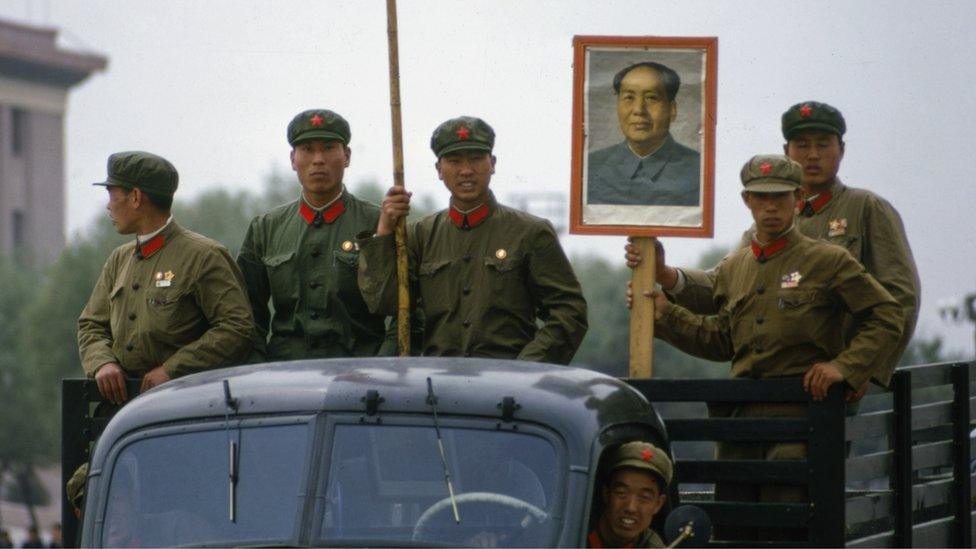
The Red Guards became violent and unruly.
However, the strict rules remained, and major cities like Beijing became pretty unappealing places to live.
Everybody had to wear blue, green, white, black or grey jumpsuits and bicycles were only allowed to be painted black.
By the early 1970s, Chairman Mao's health was starting to decline, and his relationships with other world leaders was also suffering.
He was slowly losing his eyesight and also experienced a variety of heart, lung, and nervous system problems, although his mind remained sharp to the end.
Chairman Mao died in 1976, leaving behind a very different People's Republic of China to the one he founded in 1949.
China has a population of over 1.4 billion people
The country has an area of 9.6 million square kilometres
The main language spoken is Mandarin Chinese.
The major religions practiced in China are Buddhism, Christianity, Islam, Taoism.
How China changed
During Mao's leadership, the People's Republic of China did develop in other ways.
More people than ever had learned to read and write, the economy was three times as strong as it was in 1949 (although it was still a relatively poor country), and people were expected to live a lot longer.
Technology had started to boom too, with China creating their own space program.
After Mao's death, a powerful politician called Deng Xiaoping played a pivotal part in boosting China out of it's financial troubles.
The strict rules on business and trade were relaxed and everyday people were allowed to start their own companies and buy and sell things to other countries.
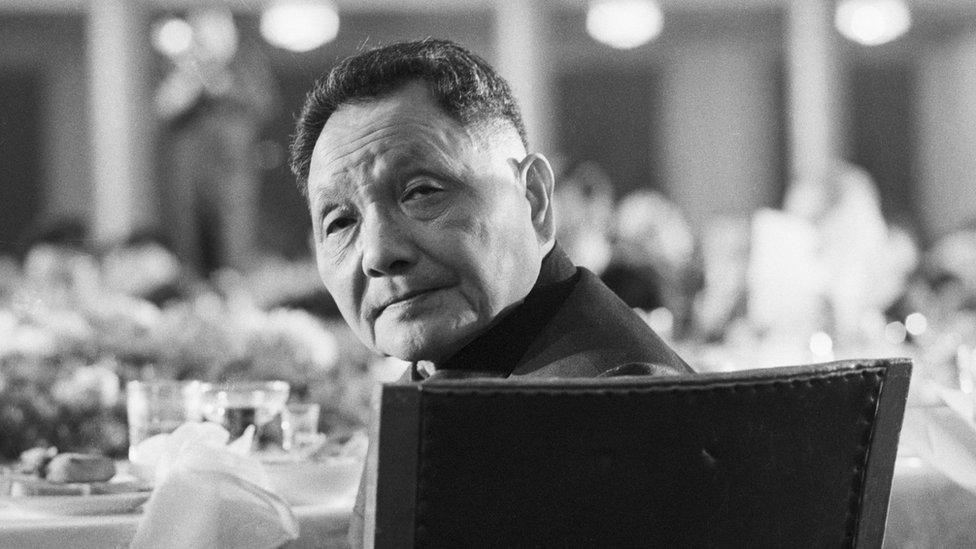
Deng-Xiaoping
This boosted the economy, increased how much money people were earning and pulled a lot of people out of poverty.
Agriculture was no longer the main industry across the country, and by 1980, construction and manufacturing were key sources of income for the ever-growing population.
But with this population boom, came the introduction of China's controversial one-child policy - where families were not allowed to have more than one baby.
This lasted all the way until 2015 where people were then allowed to have two children per household.
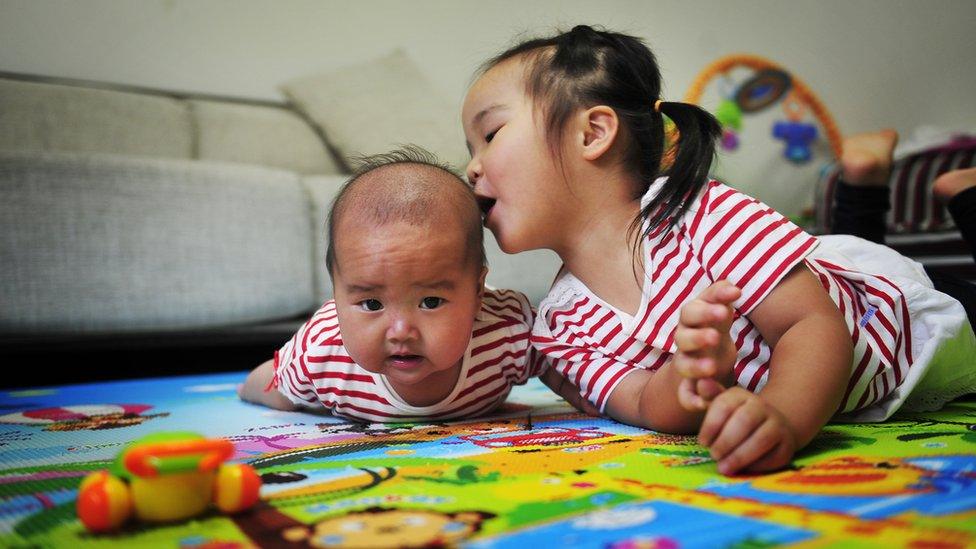
The one-child policy was relaxed in 2015.
Since the end of the Cultural Revolution, China made significant investments in scientific research.
Schools in Chinese cities teach more science, maths and engineering than any other subject, in order to increase the number of people getting into the technology industry.
China today
With a population of over 1.4 billion people, China is now the most populated country on earth.
The Chinese Communist Party is still in power and has over 82 million members.
It still controls all aspects of Chinese life - from what children learn in school, what they watch on TV to how they search the internet.
Watch the story of China's left-behind children
Thousands of cyber-police watch the web and material deemed politically and socially sensitive is filtered and removed.
Blocked sites include Instagram, Twitter, YouTube and human rights sites.
These days, China is a huge economic superpower - they have the second biggest economy in the world.
Telecommunications, technology and manufacturing are the biggest contributors to the country's wealth.
Amongst other things, China's ancient history draws millions of tourists every year.
For example, the iconic Great Wall - a World Heritage Site. - is really popular.
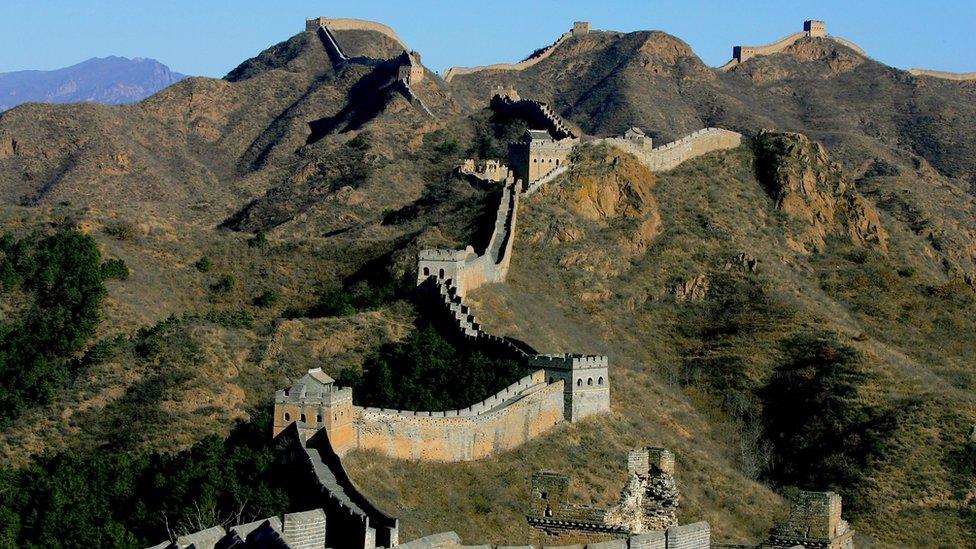
The Great Wall of China started to be built as early as 481BC
It is difficult to know exactly how long it is, but it is believed that it was once over 20,000km long.
The Great Wall of China stretches from the Yellow Sea in the east near to Beijing, to the Gobi Desert, making it the world's longest man-made monument.
- Published12 February 2024
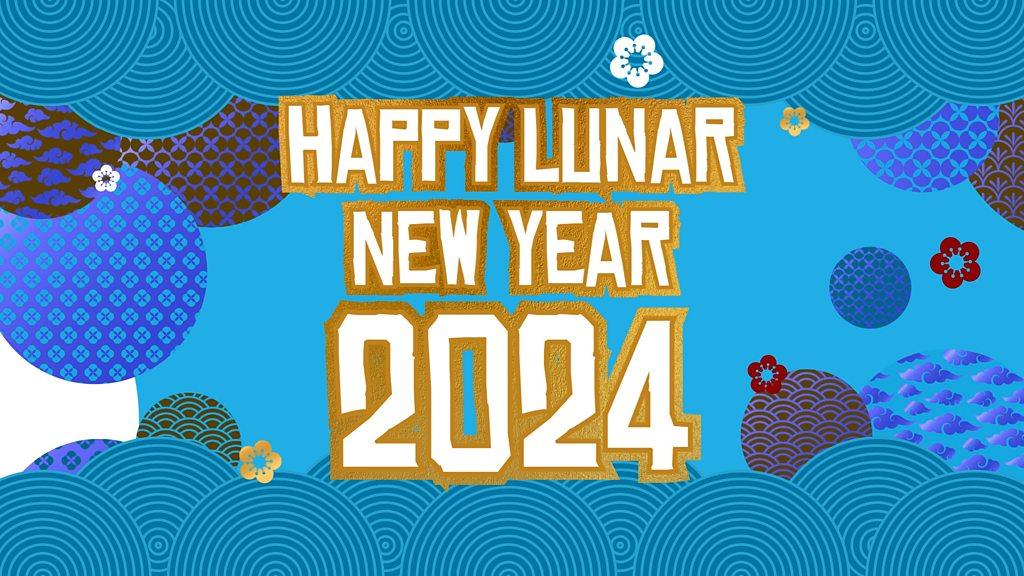
- Published12 April 2016
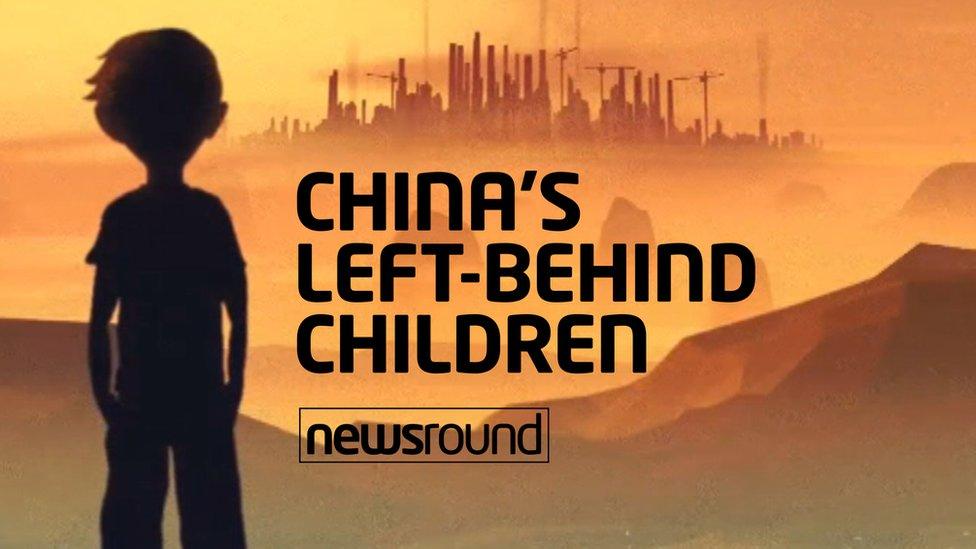
- Published24 September 2019
